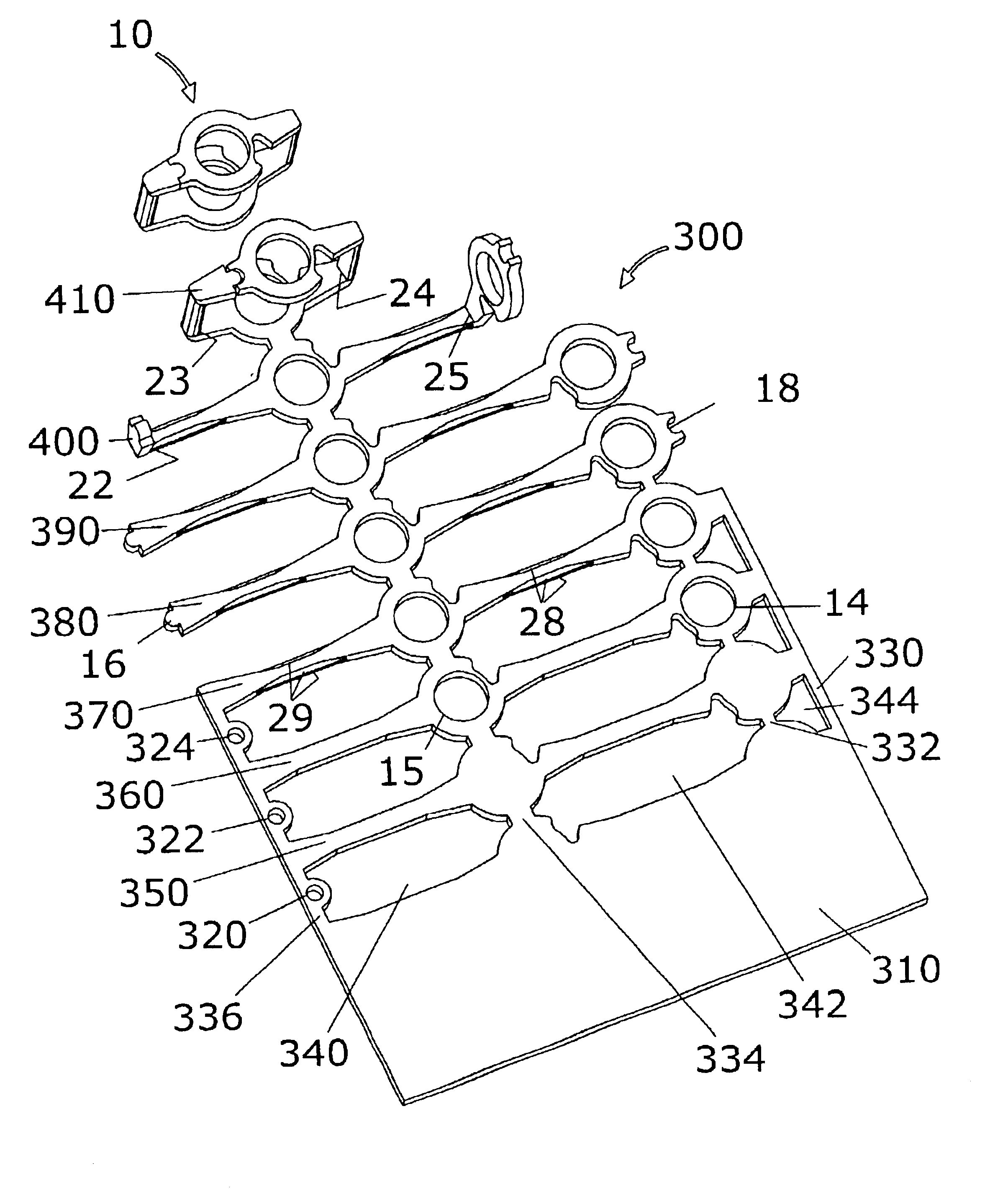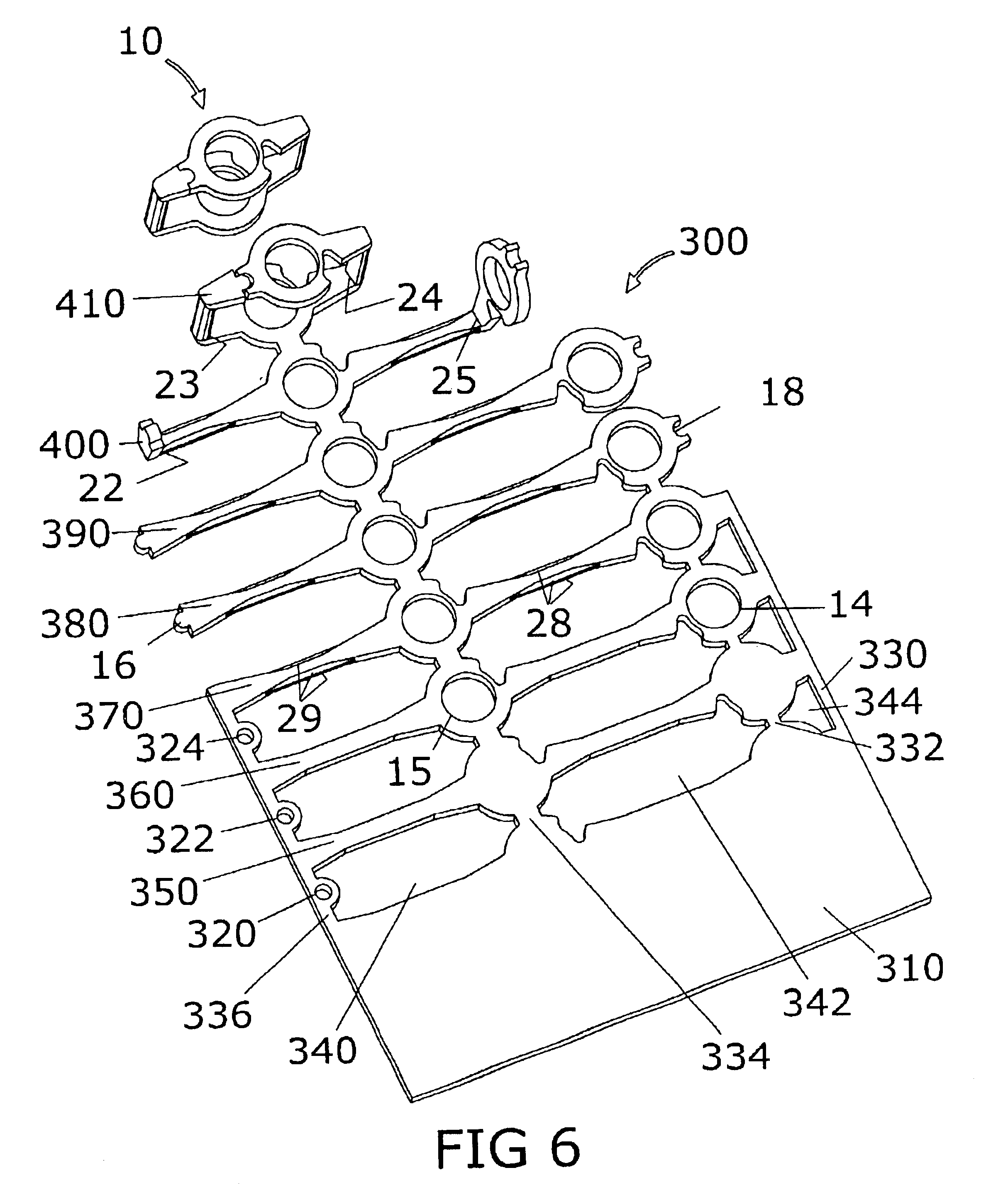Method of fabricating a clipless bicycle pedal
a bicycle pedal and manufacturing method technology, applied in the field of four-sided clipless bicycle pedals, can solve the problems of high manufacturing cost of four-sided pedals, inability to meet the needs of bicycle users, so as to achieve a large market, reduce the overall cost of the pedal, and make the pedal far more economically.
- Summary
- Abstract
- Description
- Claims
- Application Information
AI Technical Summary
Benefits of technology
Problems solved by technology
Method used
Image
Examples
Embodiment Construction
The preferred embodiment of the present invention may be understood by referring to FIGS. 1-20. It will be seen that a low cost four-sided clipless pedal mechanism is comprised primarily of two stamped and welded components: an inner wing 10 and outer wing 40. Inner wing 10 and outer wing 40 are preferably stamped using a progressive stamping method in order to obtain their three dimensional shapes and then welded closed. FIGS. 1-4 show a conceptual stamping method as a four step process, but the number of stamping stations could vary greatly depending on the actual design of the stamping tool and the thickness and properties of the material chosen. For example, the process could actually be done with ten steps instead of four. In a specific example, a progressive stamping stages plate 300 is shown to form an inner wing 10 in seven stages 350, 360, 370, 380, 390, 400, and 410. Progressive stamping is an extremely cost effective method of stamping inner wing 10 and outer wing 40. A s...
PUM
| Property | Measurement | Unit |
|---|---|---|
| time | aaaaa | aaaaa |
| surface area | aaaaa | aaaaa |
| weight | aaaaa | aaaaa |
Abstract
Description
Claims
Application Information
 Login to View More
Login to View More - R&D
- Intellectual Property
- Life Sciences
- Materials
- Tech Scout
- Unparalleled Data Quality
- Higher Quality Content
- 60% Fewer Hallucinations
Browse by: Latest US Patents, China's latest patents, Technical Efficacy Thesaurus, Application Domain, Technology Topic, Popular Technical Reports.
© 2025 PatSnap. All rights reserved.Legal|Privacy policy|Modern Slavery Act Transparency Statement|Sitemap|About US| Contact US: help@patsnap.com



